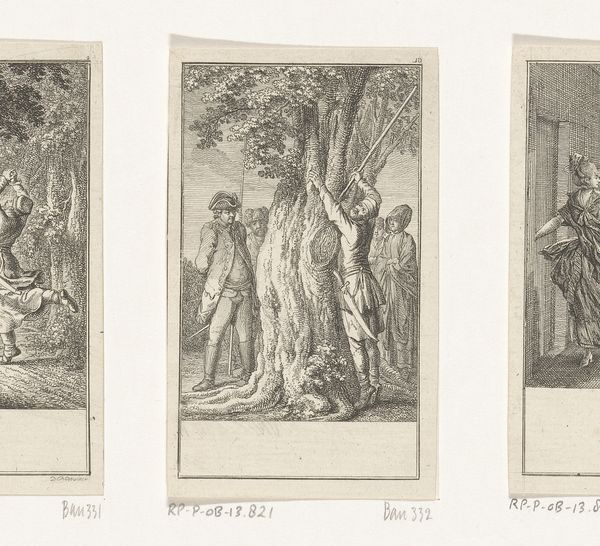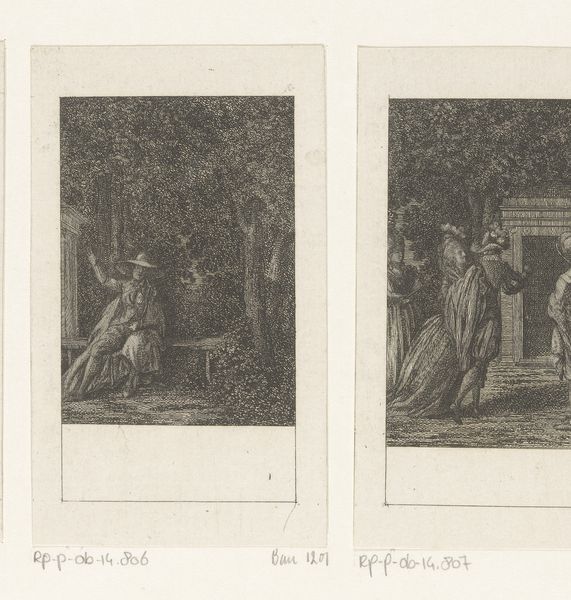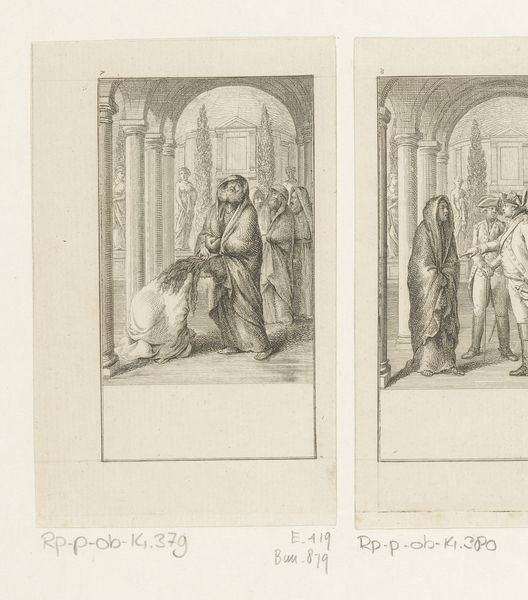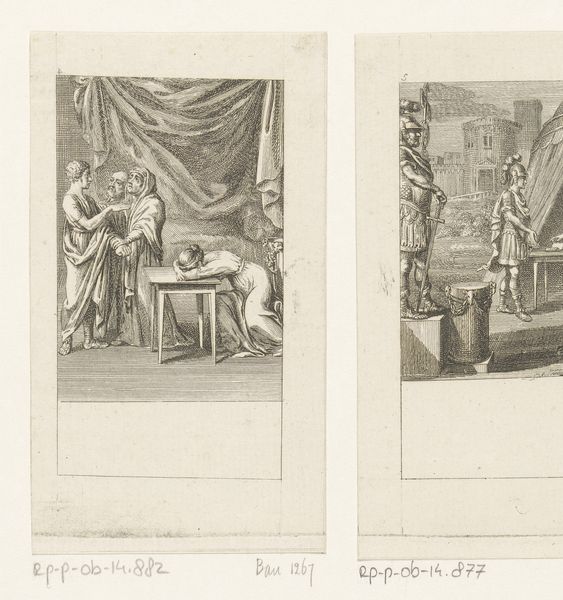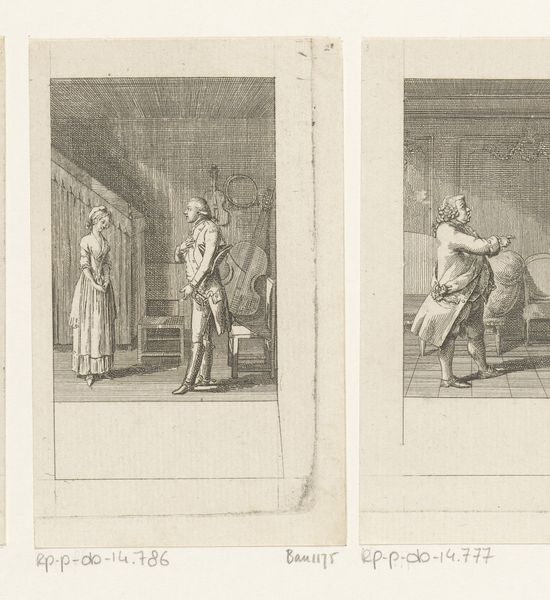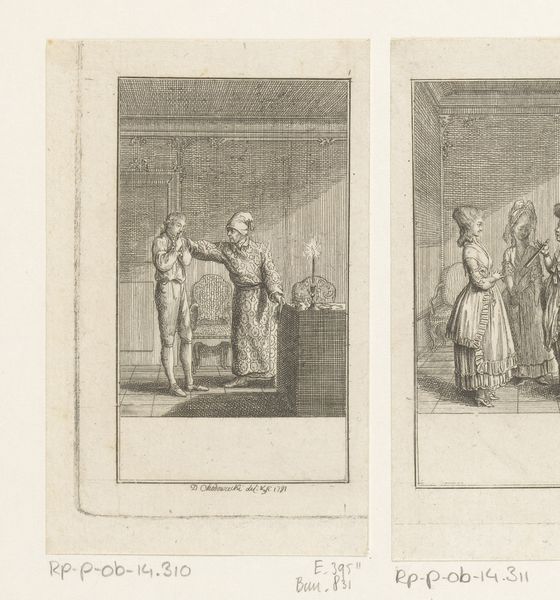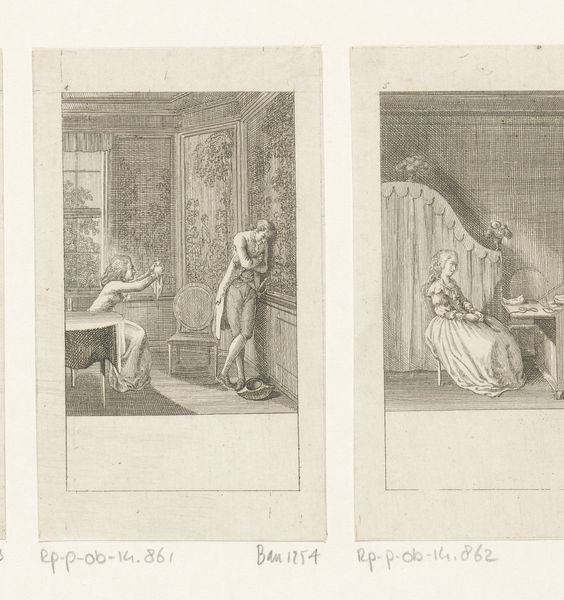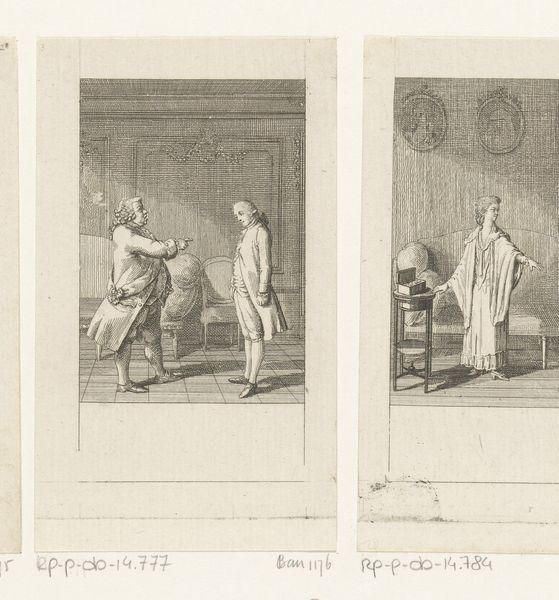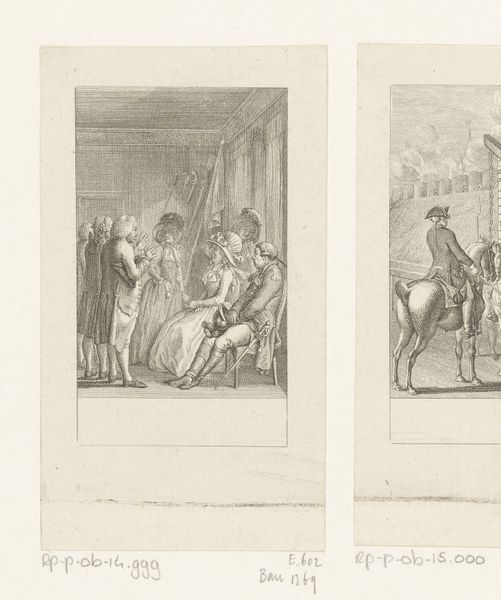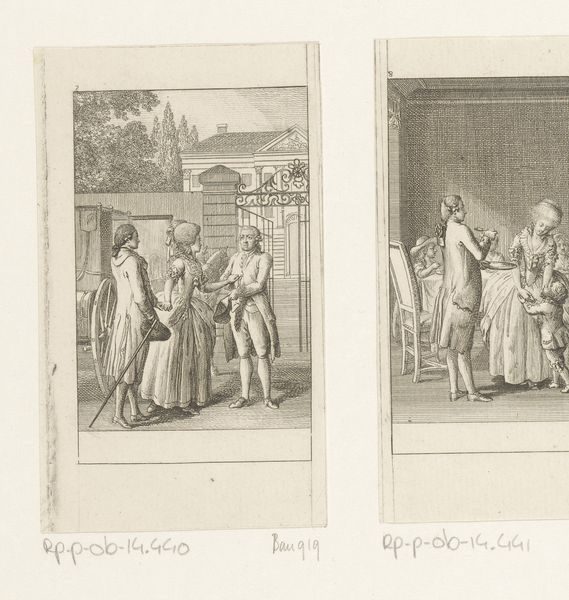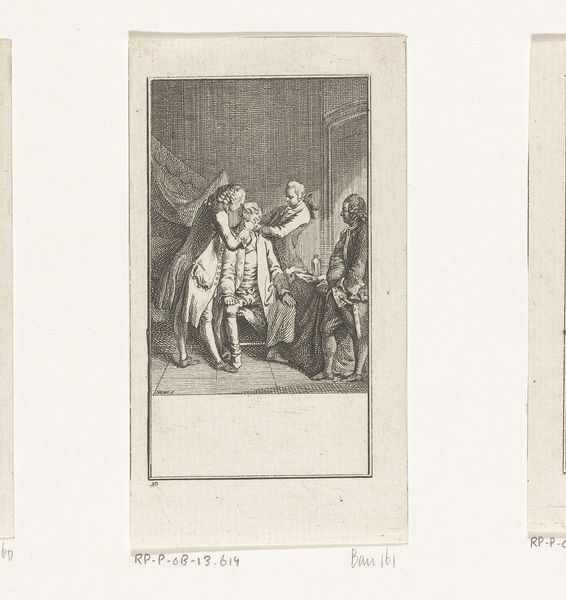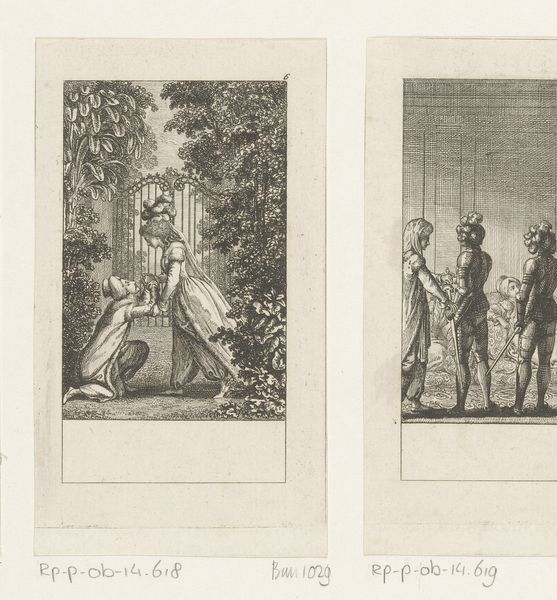
drawing, paper, engraving
#
drawing
#
neoclacissism
#
narrative-art
#
figuration
#
paper
#
line
#
cityscape
#
history-painting
#
engraving
#
realism
Dimensions: height 113 mm, width 64 mm
Copyright: Rijks Museum: Open Domain
Editor: This is Daniel Nikolaus Chodowiecki’s engraving, “Lanassa's oude liefde keert terug,” from 1782, currently held at the Rijksmuseum. It's rendered in a precise linear style and feels very narrative-driven. What do you see in this piece that speaks to its historical context? Curator: As a materialist, I immediately note that this is an engraving—a *reproduction* of an image, intended for wide distribution. Chodowiecki wasn't producing unique luxury objects for the elite; his prints brought stories to a broader public, shaping social consciousness. Notice the way line defines form, a cost-effective method allowing for mass production. What kind of narrative is being reproduced here, and who could have afforded it? Editor: The clothing indicates that the story involves some well-to-do people or high society; judging by the neoclassical architectural backdrop. I am not so sure if this would have appealed to wider audience because not many would read. Curator: You're correct in noting the architectural setting and dress— both signs of access and privilege— but remember literacy wasn't the only path to knowledge. The print serves as a potent reminder that images themselves disseminate ideas. What social narratives is Chodowiecki circulating for consumption with these characters in his art piece? Are there any societal or power structures being suggested? Editor: Perhaps the artist might be reinforcing some of the class and societal structure by representing them in this artwork. This engraving hints at broader social conversations concerning class, access, and ways of disseminating ideas beyond simply the upper classes, thanks to the materials employed and the processes in printmaking. Curator: Precisely. The materiality directs our attention to how visual culture functions in society beyond individual genius, concerning production, accessibility, and even social control. The art of print can also convey and shape ideals through narrative itself.
Comments
No comments
Be the first to comment and join the conversation on the ultimate creative platform.

